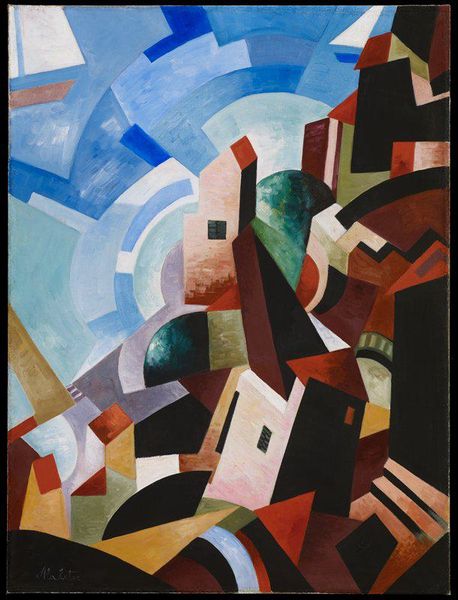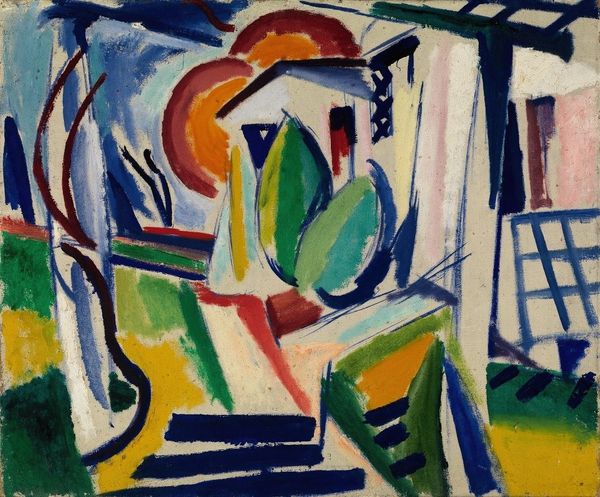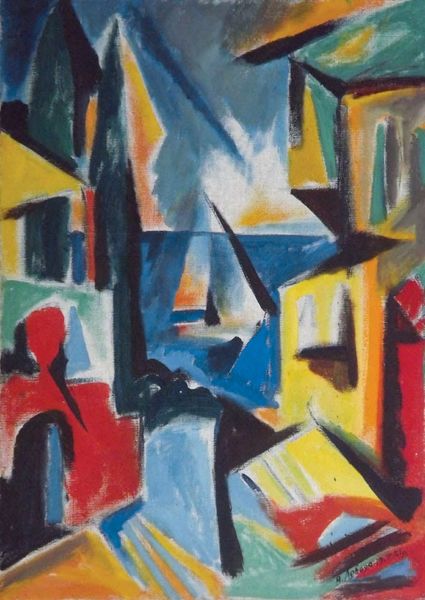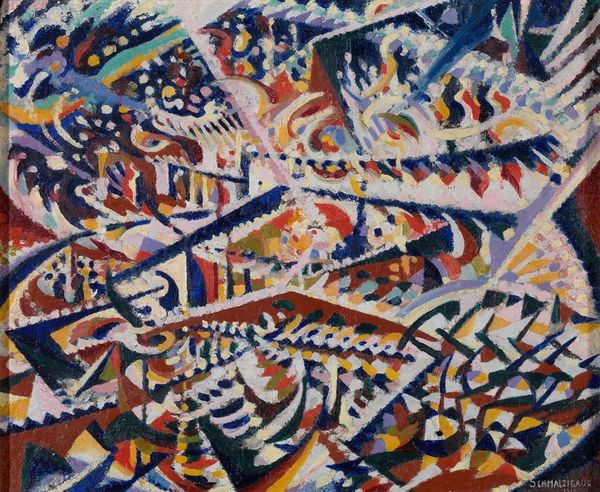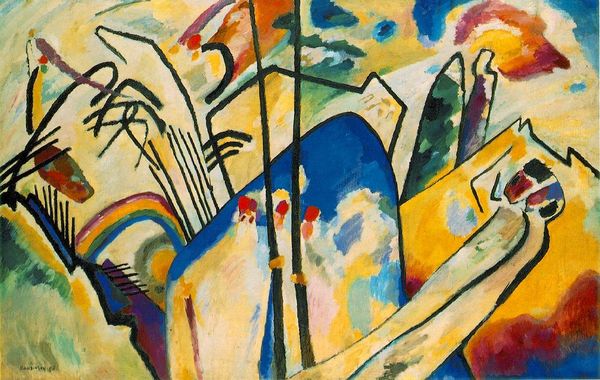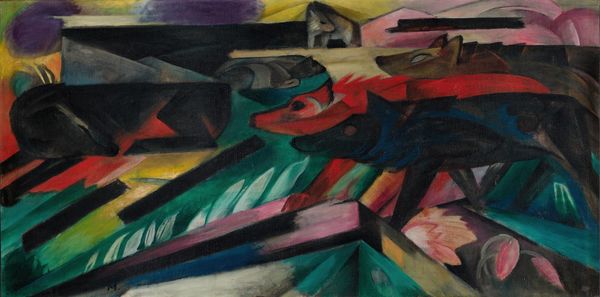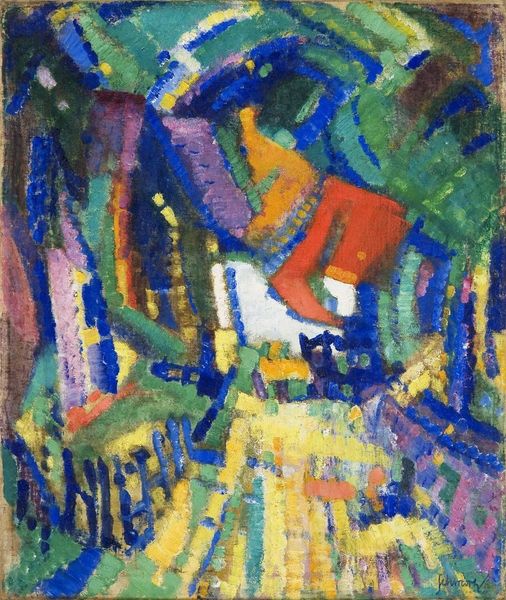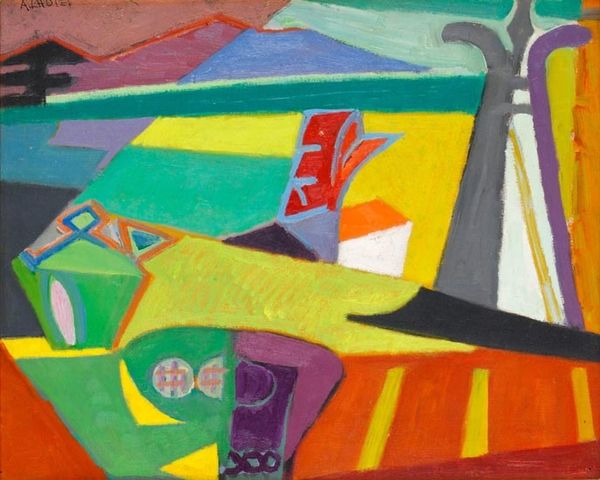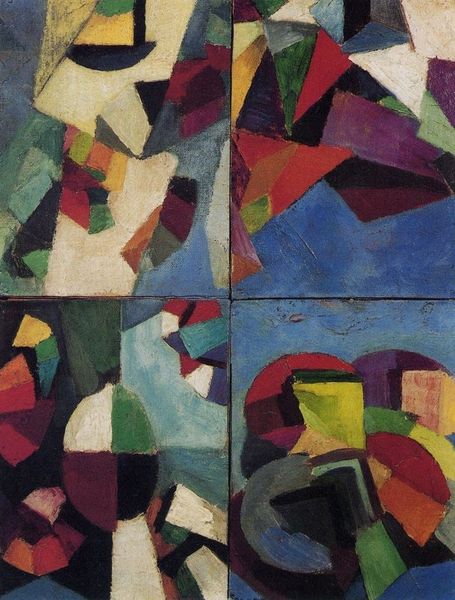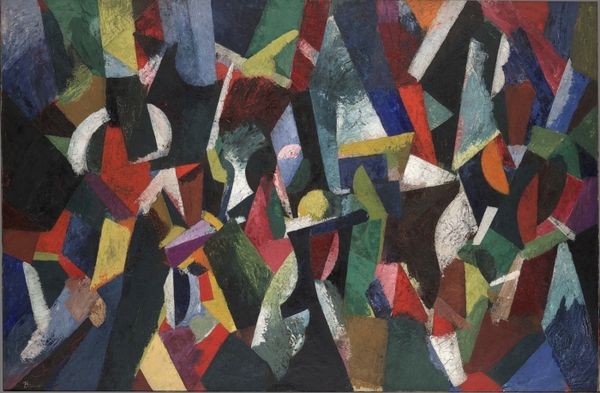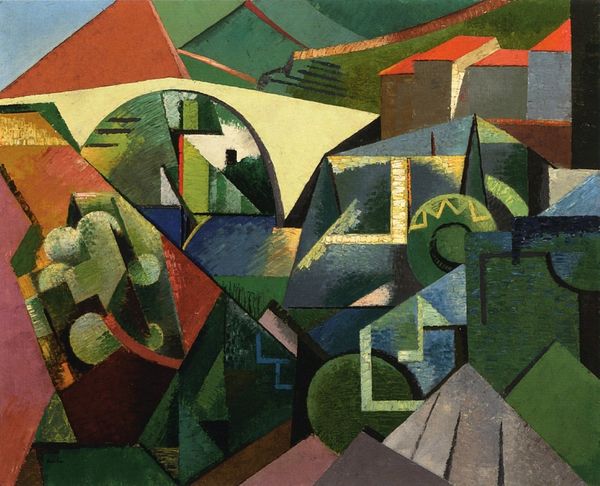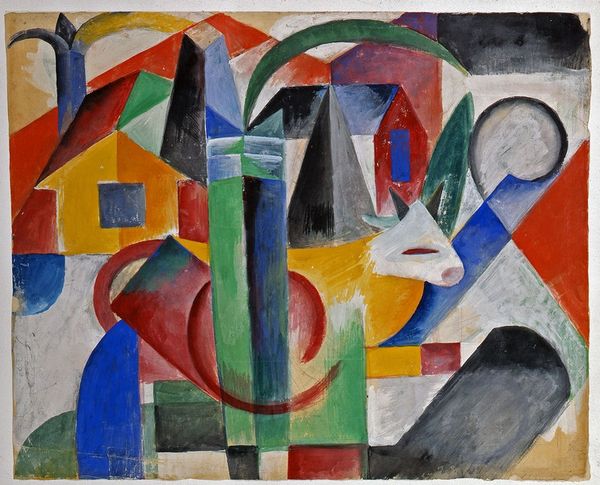
#
popart
#
abstract painting
#
pop art
#
abstract
#
tile art
#
neo expressionist
#
acrylic on canvas
#
spray can art
#
pop art-influence
#
chaotic composition
#
expressionist
Copyright: Public Domain: Artvee
Editor: This is "Scheherazade" painted in 1915 by Henry Lyman Saffen, and it’s such a striking composition. The colors are so bold and the shapes feel both familiar and totally abstract. It almost has a dreamlike quality to it. What catches your eye most about this painting? Curator: The title immediately piques my interest. "Scheherazade" evokes the "One Thousand and One Nights," a collection of Middle Eastern folk tales. It makes me consider the emotional and psychological power embedded within these vibrant, almost Fauvist shapes. Do you notice how certain forms—the arches, perhaps windows—are repeated, like echoes? Editor: Yes, I see the arches now that you point them out! They remind me of architecture. So you think Saffen is intentionally drawing from the stories themselves? Curator: Perhaps. Consider the power of storytelling, especially female storytelling as a means of survival. Scheherazade saved herself by captivating the king with endless tales. This canvas could be an abstract representation of that continuous, generative act. Do you find anything else repeated? What could those motifs signify? Editor: I think there are patterns, but no literal representations in this painting! And this is oil on canvas! I missed this important bit of metadata initially. But I also sense energy; the red strikes are very strong in a way that feel expressionist. Curator: The energetic strokes could symbolize the urgent need to create, to continuously spin a narrative. Those red strikes, you’re right, they disrupt the somewhat gentler curves. Is Saffen showing us the tension inherent in storytelling itself— the constant negotiation between danger and hope? What do you make of the tile-like or architectural forms and their relationship to narrative space? Editor: I never would have connected this painting to storytelling in that way! I’m struck by how you find layers of meaning within those basic shapes and colours. It really makes me appreciate the depth of abstraction. Curator: Indeed, art, like storytelling, builds upon shared symbols and visual cues. Recognizing these allows us to connect with the work and its cultural memory.
Comments
No comments
Be the first to comment and join the conversation on the ultimate creative platform.
